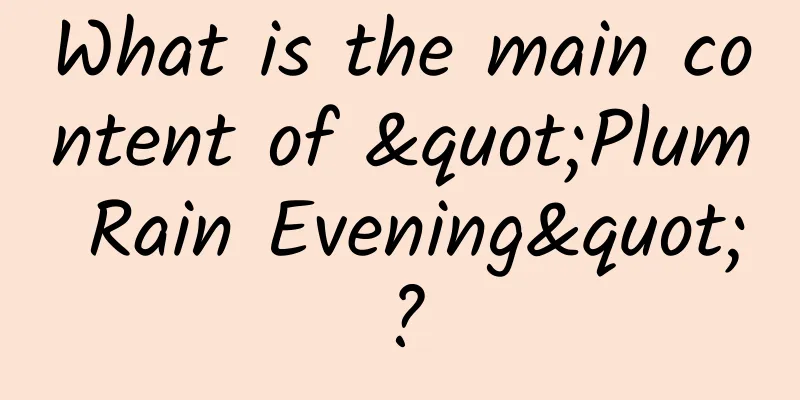Mobile Commerce Daily: Image search deepens mobile commerce conversations

|
By Erika Racicot Consumers’ relationship with the word “search” has changed dramatically over the past two decades. Searching for information of any kind has gone from being an inherently personal experience to one of the most widely researched and profitable businesses on the planet. The smartphone has had an earthquake-like impact on our ability to satisfy this insatiable thirst for answers. By putting the power of online search in our pockets, we have almost instant access to answers to any fleeting question, as long as we can clearly explain in words what we are looking for. It seems perfect. However, we are also born visual animals. 90% of the information transmitted to the brain is visual, and this type of information is processed 60,000 times faster than text information (quoted from Hubspot). Also, what should we do with some things around us that cannot be explained with simple keywords, things that are complex or special or cannot be simply described? Sight Recent advances in image search are setting the stage for a major shift in how people interact with the world around them and how sellers can better engage with buyers. By combining advanced image recognition and search algorithms, social network integration, and mobile-specific technologies like NFC and BLE, today’s image search companies enable users to ask highly intuitive queries based solely on what they see online and in the real world around them. Imagine taking a photo of the Statue of Liberty and then being able to get detailed information about its history, tour itineraries, ticket prices, nearby restaurants, or even which of your Facebook friends are in the area — no problem. Take a photo of Houston's baseball field to get its historical events or Little League registration information for your kids? You can do it. The fact that acquiring information no longer depends solely on the ability to accurately translate what you see into words changes everything. Eye In the race to attract the rapidly growing population of smartphone-savvy consumers, brands and retailers are highly motivated to create interactive and intuitive experiences. Optimizing websites, augmented reality, and apps of all shapes and sizes are high on the list of top choices. Yet a study by Deloitte found that 80% of brand apps have been downloaded fewer than 1,000 times, and most smartphone users have only one or two retailer apps on their phones. Mobile consumers are impatient and choice-weary, so it makes sense that they would choose to install a brand or retailer app on their precious smartphones. Applications are often developed with too much substance, little thought given to making them fundamentally useful, and are difficult to use. At this critical juncture, image search technology is viable and the industry is booming. Retailers are also looking to evolve or overhaul not only their mobile commerce strategies but also their total channel strategies and take a hard look at the granddaddy of all retail threats: showrooming. While no single solution will solve all challenges, image search technology may present an opportunity to unite the disparate parts of a retailer’s operations and provide modern consumers with the engaging shopping experience they seek. Simple and fast Later this year and early 2014, several major retailers will release new mobile apps built around image search capabilities. Featuring search results that only scope a retailer's product catalog, customers can perform incredible image searches in any environment. Here are some examples of how these all-in-one software work: A mobile app from a major fashion retailer lets its customers snap a picture of a stranger's clothing on the street and get matching results from its latest catalogue. Customers can buy and have clothes shipped to the store for collection or have them shipped directly to any home address - all within the app. Another retailer uses image search as an in-store payment portal, allowing its customers to take photos of the products they want to purchase. Instead of waiting in line to pay, customers can walk out of the store and simply check out through the app as they leave. Contextual search is another retailer's app focus, allowing its customers to take a photo of a home improvement situation — a broken window, a hole in the wall — and then receive a how-to video, requested product information and an in-store mapping tool. Image search represents an unprecedented milestone for retailers, facilitating interactions based on consumer instructions and requests. The possibilities for custom use cases are endless, and retailers themselves will define the most effective applications in the months ahead. For consumers, branded apps that use image search have the potential to go beyond a one-off product promotion gimmick and become an important tool that provides guidance in moments of indecision, efficiency in moments of anxiety, and access to desired products when inspiration strikes. Via: 199it Translated from Mobile Commerce Daily |
>>: Browser Wars 2013: BlackBerry 5.0 Browser Loads Pages Fastest – Infographic
Recommend
Why do I have lower abdominal pain every time after having sex?
Many women experience lower abdominal pain after ...
Women will be healthier if they touch this part more often
Chest massage method First, turn off the lights a...
Frequently forgetting things is a sign of Alzheimer's disease? Eating these regularly can improve memory!
Expert of this article: Fu Shufang, Master of Foo...
Female left lower abdominal pain
There are many reasons why women experience inter...
How to quickly replenish amniotic fluid within 3 days
During pregnancy, pregnant mothers not only have ...
What medicine should women use for varicose veins
Varicose veins in women are also a relatively com...
Is the constant temperature underwear on Douyin real? What brand is the 37 degree constant temperature warm clothing on Douyin?
Recently, Douyin has been showing 37-degree const...
Can I eat rice during my period?
Diet during menstruation has always been an impor...
What is the level of plank support for 3 minutes? Is it good to do plank support in the morning?
When is the best time to do plank support? In fac...
Can Tongcao Pig Trotter Soup Really Enhance Breast Size?
Tongcao is a common Chinese medicinal material. W...
Can lying down with eyes closed when you can’t sleep reduce the damage caused by insomnia?
This article was reviewed by Zhao Wei, MD, associ...
Pregnant woman lying on her back with her legs upside down
Pregnant women can lie flat on their backs with t...
How dry is the potted plant? How to water it? How to plant cucumbers in potted plants?
Nowadays, many people are used to growing some sm...
Menstruation suddenly came half a month early
The menstrual cycle may vary slightly from person...
After a woman gets married, she must learn this skill well.
The newlywed life is happy and sweet. At this mom...









